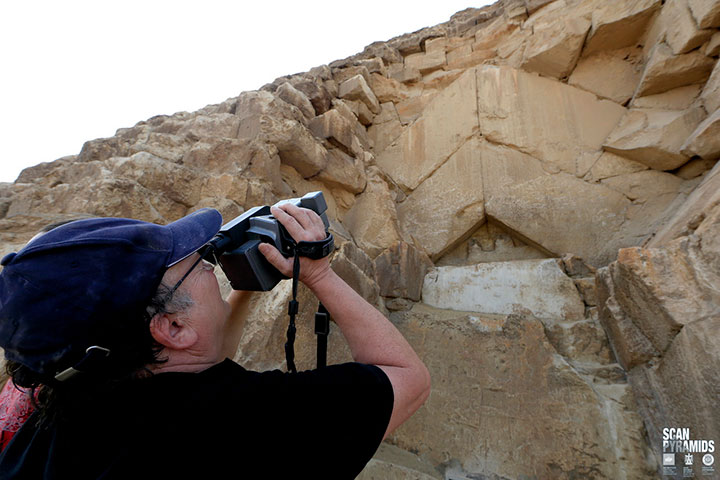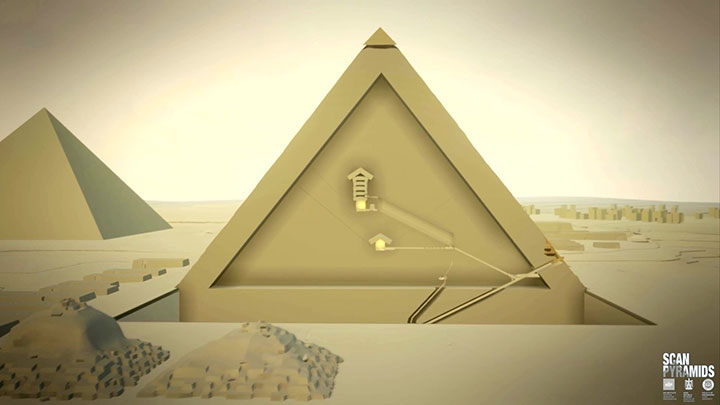Scientists believe they have found two previously unknown cavities within the Great Pyramid of Giza.

The researchers, part of ScanPyramids project used a variety of techniques — including thermal scans and 3-D simulations — to peer inside the largest of the Giza pyramids.
In November 2015, a thermal anomaly was discovered where four chevrons (inverted “V”-like stones) were overhanging in a descending corridor.
When the pyramids were built 4,500 years ago, these chevrons were covered by the casing stones. But over time the stones have fallen apart, revealing them. The scientists believe that the chevrons likely covered some sort of void.
“In ancient architecture, chevrons were not used for decoration, but they have had a very practical purpose: to protect a void and prevent the roof from collapsing,” the researchers wrote. “The question posed here was: why so many chevrons are put to protect such a small area at the beginning of the descending corridor?”
In order to get a better look inside the pyramid, a rather interesting method was used, something called muography. This device uses muons — a subatomic particle that is continually raining down on Earth from Earth’s upper atmosphere.

Get breaking National news
The researchers placed aluminum plates in the pyramid that would help them determine dense areas from less dense areas. Using this method, they found a void hidden behind the north face of the pyramid. A second void was found in the northeastern edge.
It’s unknown what these cavities are or their exact size or length, but they hope further analysis will provide new information.
The results of the scans have been submitted to a scientific committee led by former minister of antiquities Zahi Hawass.




Comments